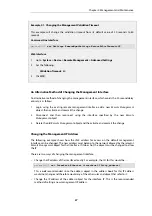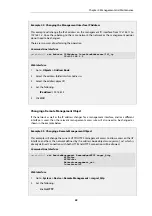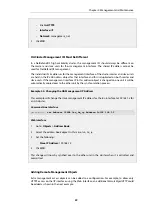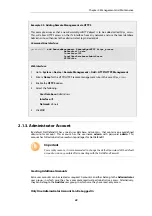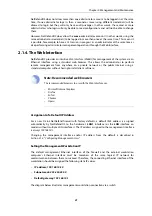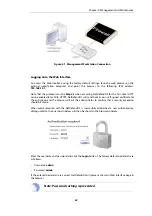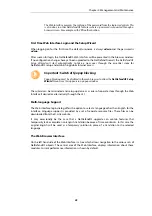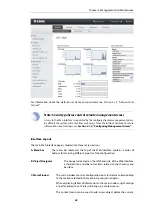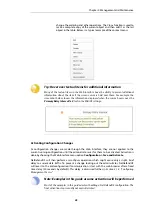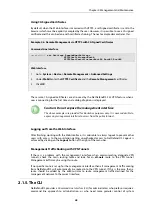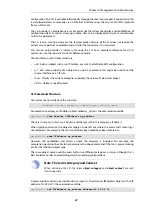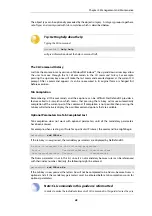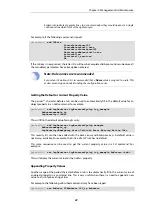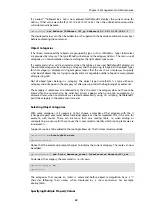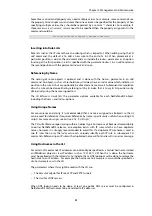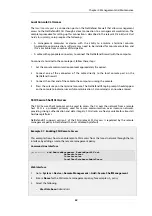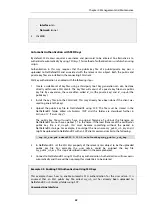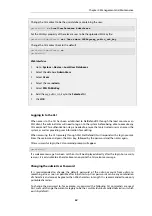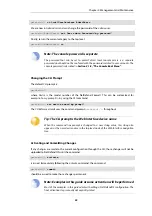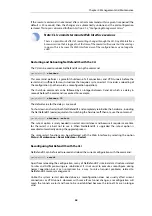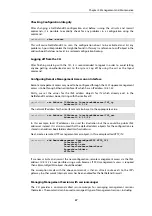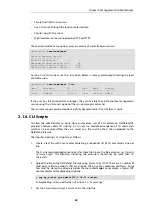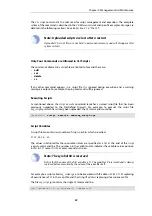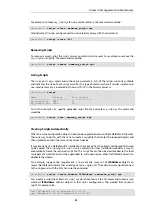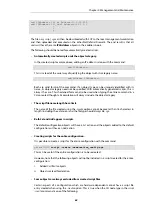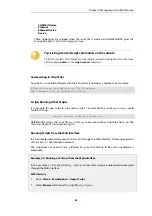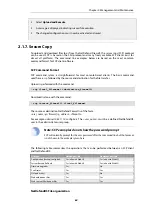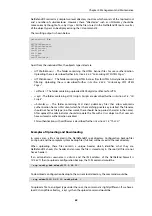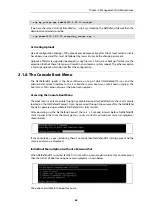
Sometimes a command property may need multiple values. For example, some commands use
the property
AccountingServers
and more than one value can be specified for this property. When
specifying multiple values, they should be separated by a comma "," character. For example, if
three servers
server1
,
server2
,
server3
need to be specified then the property assignment in the
command would be:
AccountingServers=server1,server2,server3
Inserting into Rule Lists
Rule lists such as the IP rule set have an ordering which is important. When adding using the CLI
add
command, the default is to add a new rule to the end of a list. When placement at a
particular position is crucial, the
add
command can include the
Index=
parameter as an option.
Inserting at the first position in a list is specified with the parameter
Index=1
in an
add
command,
the second position with the parameter
Index=2
and so on.
Referencing by Name
The naming of some objects is optional and is done with the
Name=
parameter in an
add
command. An object, such as a threshold rule, will always have an
Index
value which indicates its
position in the rule list but can optionally be allocated a name as well. Subsequent manipulation
of such a rule can be done either by referring to it by its index, that is to say its list position, or by
alternatively using the name assigned to it.
The
CLI Reference Guide
lists the parameter options available for each NetDefendOS object,
including the
Name=
and
Index=
options.
Using Unique Names
For convenience and clarity, it is recommended that a name is assigned to all objects so that it
can be used for reference if required. Reference by name is particularly useful when writing CLI
scripts. For more on scripts see
The CLI will enforce unique naming within an object type. For reasons of backward compatibility
to earlier NetDefendOS releases, an exception exists with IP rules which can have duplicate
names, however it is strongly recommended to avoid this. If a duplicate IP rule name is used in
two IP rules then only the
Index
value can uniquely identify each IP rule in subsequent CLI
commands. Referencing an IP rule with a duplicated name will fail and result in an error message.
Using Hostnames in the CLI
For certain CLI commands, IP addresses can optionally be specified as a textual hostname instead
an IP4Address object or raw IP address such as
192.168.1.10
. When this is done, the hostname
must be prefixed with the letters
dns:
to indicate that a DNS lookup must be done to resolve the
hostname to an IP address. For example, the hostname
host.example.com
would be specified as
dns:host.example.com
in the CLI.
The parameters where this might be used with the CLI are:
•
The
Remote Endpoint
for IPsec, L2TP and PPTP tunnels.
•
The
Host
for LDAP servers.
When DNS lookup needs to be done, at least one public DNS server must be configured in
NetDefendOS for hostnames to be translated to IP addresses.
Chapter 2: Management and Maintenance
51
Summary of Contents for NetDefendOS
Page 30: ...Figure 1 3 Packet Flow Schematic Part III Chapter 1 NetDefendOS Overview 30 ...
Page 32: ...Chapter 1 NetDefendOS Overview 32 ...
Page 144: ...Chapter 2 Management and Maintenance 144 ...
Page 284: ...Chapter 3 Fundamentals 284 ...
Page 392: ...Chapter 4 Routing 392 ...
Page 419: ... Host 2001 DB8 1 MAC 00 90 12 13 14 15 5 Click OK Chapter 5 DHCP Services 419 ...
Page 420: ...Chapter 5 DHCP Services 420 ...
Page 573: ...Chapter 6 Security Mechanisms 573 ...
Page 607: ...Chapter 7 Address Translation 607 ...
Page 666: ...Chapter 8 User Authentication 666 ...
Page 775: ...Chapter 9 VPN 775 ...
Page 819: ...Chapter 10 Traffic Management 819 ...
Page 842: ...Chapter 11 High Availability 842 ...
Page 866: ...Default Enabled Chapter 13 Advanced Settings 866 ...
Page 879: ...Chapter 13 Advanced Settings 879 ...

